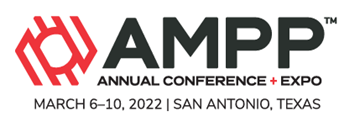Search
AMPP Conference Papers
View as
Sort by
Display
per page
15.5-Year Inspection Reveals the Effectiveness of a Single-Coat Epoxy
Product Number:
51322-17996-SG
Publication Date:
2022
$20.00
2-Layer Polyethylene Plant Applied Mainline Coating for Use in Water and Wastewater Pipeline Applications
Product Number:
51324-20761-SG
Publication Date:
2024
$40.00
3D Printing Of Cemented Carbide: A Review And Perspectives In Oil Sands
Product Number:
51322-17506-SG
Publication Date:
2022
$20.00
40-Year Maintenance Free Coating Solution for Offshore Structures
Product Number:
51324-20591-SG
Publication Date:
2024
$40.00
50 mV As a Screening Criteria for Shorted Casings – Case Study
Product Number:
51323-18899-SG
Publication Date:
2023
$20.00
A Case Study On Microbiologically Influenced Corrosion In Oil Producing Well Flowlines
Product Number:
51322-17924-SG
Publication Date:
2022
$20.00
A Case Study on the Cause of Pipelines Leaks by Phone Line Damage
Product Number:
51324-20946-SG
Publication Date:
2024
$40.00
A Case Study on the Failure of Fiber Reinforced Epoxy (FRE) Lining on Condensate Storage Tank
Product Number:
51323-19193-SG
Publication Date:
2023
$20.00
A Case Study: Piecewise vs. Holistic Pipeline AC Mitigation Design
Product Number:
51323-19307-SG
Publication Date:
2023
$20.00
A Case Study-Caustic Gouging Of Boiler Tubes
Product Number:
51322-17780-SG
Publication Date:
2022
$20.00












